1.
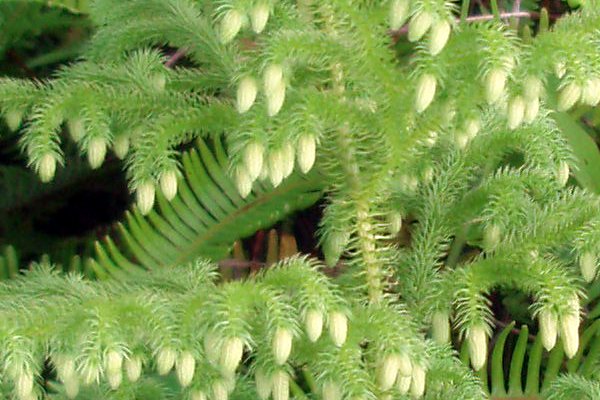 Name the morphological features of this Lycopodiella cernua seen on the seedless vascular plant hike on 21 August 2007.
Name the morphological features of this Lycopodiella cernua seen on the seedless vascular plant hike on 21 August 2007.
Lycopodiella cernua
has awl-shaped microphylls instead of true leaves. At the terminal end of each branch a single strobilus (cone) forms. In the image the strobili (cones) are the white conical shapes.
2.
When working in the ethnobotanical garden across the entrance road I noted that ferns should not be cut. The rule is that ferns are to be kept, retained. Why would we want to retain ferns in ethnobotanical garden? Your answer should be written from an ethnobotanical perspective.
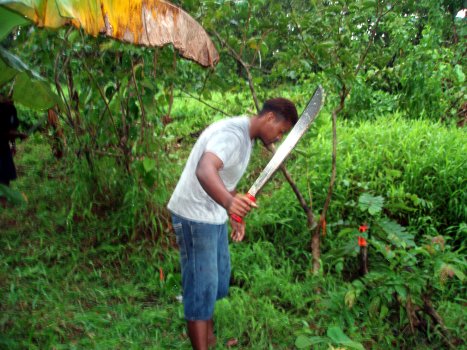 Ferns are native plants. Native means that they are considered plants that belong naturally on Pohnpei and are a part of the natural landscape. Native plants belong here on Pohnpei. Native plants are contrasted with introduced plants. Some introduced plants are economically useful or beneficial. Some introduced plants are, however, invasive. In the ethnobotanical garden the "battle" is against the introduced invasive razor grass known locally as reh padil. Other introduced invasives include the small yellow daisy, the sensitive mimosa, and Chromolaena odorata. As one student wrote, "When one cuts down a fern, he is creating a chance for another unwanted species of plants to overgrow the place."
Ferns are native plants. Native means that they are considered plants that belong naturally on Pohnpei and are a part of the natural landscape. Native plants belong here on Pohnpei. Native plants are contrasted with introduced plants. Some introduced plants are economically useful or beneficial. Some introduced plants are, however, invasive. In the ethnobotanical garden the "battle" is against the introduced invasive razor grass known locally as reh padil. Other introduced invasives include the small yellow daisy, the sensitive mimosa, and Chromolaena odorata. As one student wrote, "When one cuts down a fern, he is creating a chance for another unwanted species of plants to overgrow the place."
In addition, ferns are locally useful plants. Ferns are used medicinally, for decoration, and even in the construction of local huts and homes. Some are even used in soups.
3.
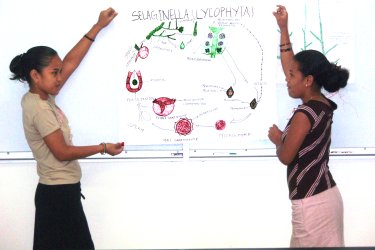 Write about the key characteristics of seedless vascular plant reproduction that characterize this group of plants. What reproductive cycle features do these plants have in common? In what ways does their reproduction differ from each other?
Write about the key characteristics of seedless vascular plant reproduction that characterize this group of plants. What reproductive cycle features do these plants have in common? In what ways does their reproduction differ from each other?
The seedless vascular plants have in common the use of spores carried by the wind as a method of spreading to new places. Another common reproductive feature is that these spores do not form new plants directly. The spores usually grow into haploid gametophyte that produces either swimming sperm or eggs. Water is then necessary for the sperm to reach the egg. Once fertilized, the newly formed zygote develops into a new plant.
These plants differ in the structures that produce spores. Psilotum, lycopodium, and selaginella produce spores in cone-like structures called strobili. Ferns produce spores in areas on the pinnae called sori. Some sori are round areas on the bottom of the pinnae, other sori are pockets at the edge of the pinnae. A few ferns such as
Asplenium nidus have slot-shaped sori on the bottom of their single, undivided frond.
4.
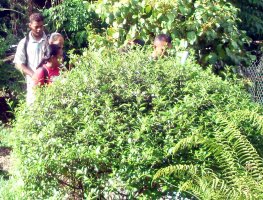 Distinguish between "public" and "private" healing plant knowledge.
Distinguish between "public" and "private" healing plant knowledge.
Public plant knowledge is broadly known knowledge. Knowledge that is commonly held. Many people know this information, and the information is not considered a secret. Noni is widely used by those with diabetes, Ocimum tenuiflorum in hot water helps relieve nasal congestion, and Senna alata is used to treat fungal diseases of the skin. Ethnobotanists tend to consider public plant knowledge as being more likely to be effective. The multi-island usage indicates that this is a cure that really works.
Private plant knowledge are secret recipes. In Micronesia these secret formulas are usually held within a family and held by a single person in that family. This knowledge is usually passed down to a single son or daughter.
5.
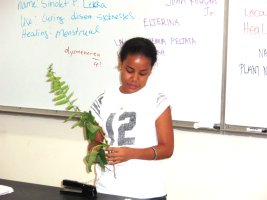 What is a culture bound syndrome?
What is a culture bound syndrome?
A culture bound syndrome is an illness or condition that is both defined by and is a product of the "world view" of a culture. The illness or condition, or perception of illness, is unique to that culture. The cure is also unique to that culture. Other cultures may or may not consider the condition to be a disease. Both the illness and cure exist only within a cultural context.
Culture bound syndromes are NOT "all illnesses cured by local plants." Culture bound syndrome are NOT those illnesses cured only by privately held healing knowledge.
6.
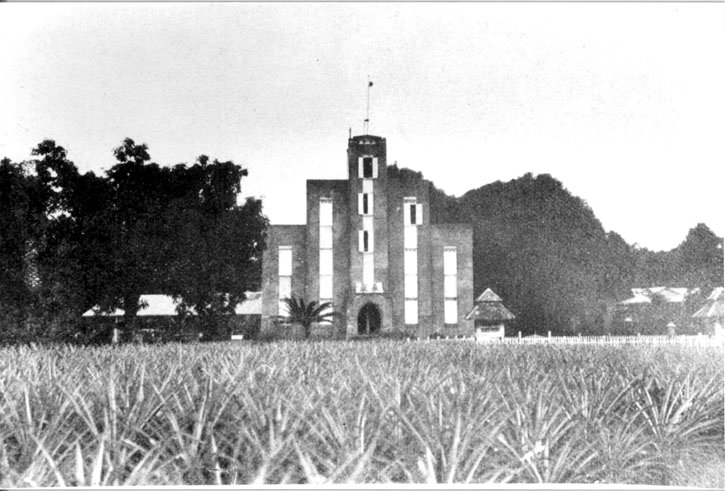 What is economic botany? What types of plants does this field study that we have encountered?
What is economic botany? What types of plants does this field study that we have encountered?
Economic botany studies plants that have a market value. Plants that have a cash value. Originally the field studied food crops, timber producers and other plants with traditional market value. The field expanded to study the economic value of intact versus harvested ecosystems. An example of this trade-off is a study in Kosrae that examined which was worth more - the mangrove crabs contained in an intact mangrove or the wood when harvested and sold as firewood.
The Americans, Spanish, Germans, and Japanese all introduced plants with economic value. On the field trip to the Japanese agriculture station the class saw a number of these plants that were seen as having economic value. The class saw spice plants such as cloves, nutmeg, and allspice. The former station also has plants brought in for their timber value including Norfolk island pine, kauri, mahogany, painted eucalyptus, and teak. Other plants in the present day garden include plants that provide food and drink such as coffee, breadfruit, banana, surinam cherry, star fruit, guava, mangosteen, and yellow mangosteen.
7.
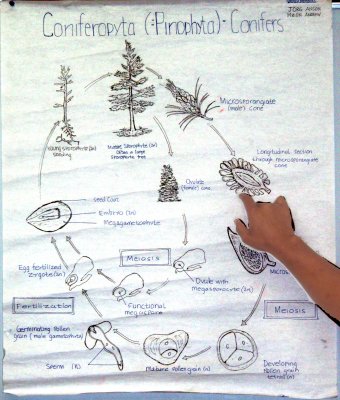 Write about the key features of gymnosperms and of their reproductive cycle that characterize this group of plants. What reproductive cycle features do these plants have in common?
Write about the key features of gymnosperms and of their reproductive cycle that characterize this group of plants. What reproductive cycle features do these plants have in common?
Gymnosperms have in common the production of cones. Gymnosperms produce male cones which produce pollen and female cones which produce seeds. Gymnosperms usually use the wind to carry their pollen from male cones to female cones. These plants are often, but not always, trees or shrubs. They do not produce flowers or fruit.
 Name the morphological features of this Lycopodiella cernua seen on the seedless vascular plant hike on 21 August 2007.
Name the morphological features of this Lycopodiella cernua seen on the seedless vascular plant hike on 21 August 2007.





 Write about the key features of gymnosperms and of their reproductive cycle that characterize this group of plants. What reproductive cycle features do these plants have in common?
Write about the key features of gymnosperms and of their reproductive cycle that characterize this group of plants. What reproductive cycle features do these plants have in common?